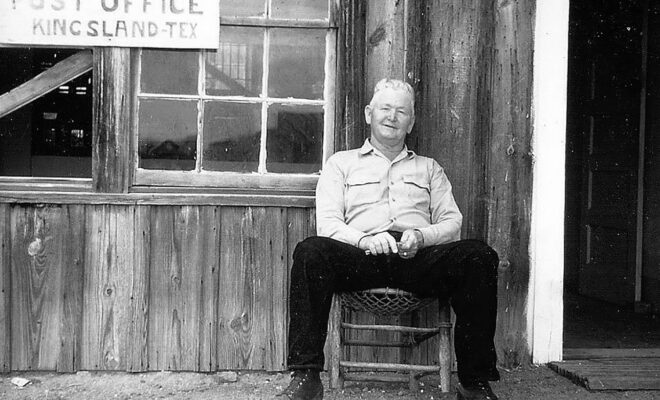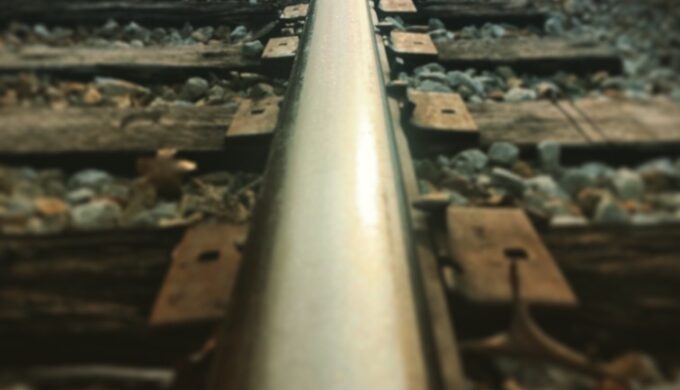Photo: Donald Banks, grandson of the original Banks family settlers in Kingsland, pictured in Llano in 2013.
Albert Banks, the oldest of the seven children, had seven children himself. Donald was the sixth; he was born in Teich in 1928, and raised in Babyhead, but he remembered well (in a 2013 interview) how he would take the train from Llano to Kingsland each summer during the late 1930s to stay with his grandmother for two weeks. “My parents would give me 50 cents,” he recalled. “A quarter for the train fare, and a quarter to spend on myself.” “I didn’t spend it all at once,” he emphasized, “A nickel could buy a lot of candy back in those days.
Donald recalled spending a lot of time reading books in the branches of a large mulberry tree at his grandmother’s home. He also recalls collecting minnows at the Kingsland Slab to sell to fishermen for bait. He remembers a rock quarry on his grandmother’s land (now under the lake) which had filled up with water and served as a sort of catfish farm for his uncle, Ballard. “They caught some big catfish there,” he reported, “Anywhere from 30 to 70 pounds.”
Neal Wood leased most of his grandmother’s property for ranching, and also did chores around the house, even bringing groceries from Fred Wood’s store. It was a time of isolation and economic decline for the tiny town, but a time of neighborliness and security for those who lived there.
Donald’s uncle, John Rufus Banks (born in 1896) was the most public face of the Banks family through the middle of the 20th century. He was honest and kind most of the time, but along with the Southern manners and strict code of honor there was a bit of a dark side. “Uncle John” hadn’t spent his whole life in Kingsland; he had served in the military in France during World War I, and again in India in World War II. When he came home, he was one of Kingsland’s leading citizens, carrying on the family’s business interests after the death of his mother in 1948. By then he had a serious drinking problem, and sometimes would suffer from hallucinations, shooting at imagined enemies wherever he happened to be. On October 9, 1958, he got into an argument with his good friend and drinking companion, A.J. “Erie” Nobles, who eventually shot him. He died a week later at McKloskey Hospital in Temple. Nobles was charged with murder, but old-timers report that he never went to prison. As Donald’s aunt explained, “They were both drunk. It could have gone either way.”
It was the end of an era in Kingsland. By 1958, the dam was built, the lake had filled up, and realtor Odie Ainsworth was promoting Kingsland all around the state of Texas as a vacation and retirement paradise. Neal Wood had purchased the old Banks property, some of which would later become the Highland Lakes Shopping Center and Nob Hill. Kingsland had changed, and life there would never be the same.
Read chapter 3 here.





